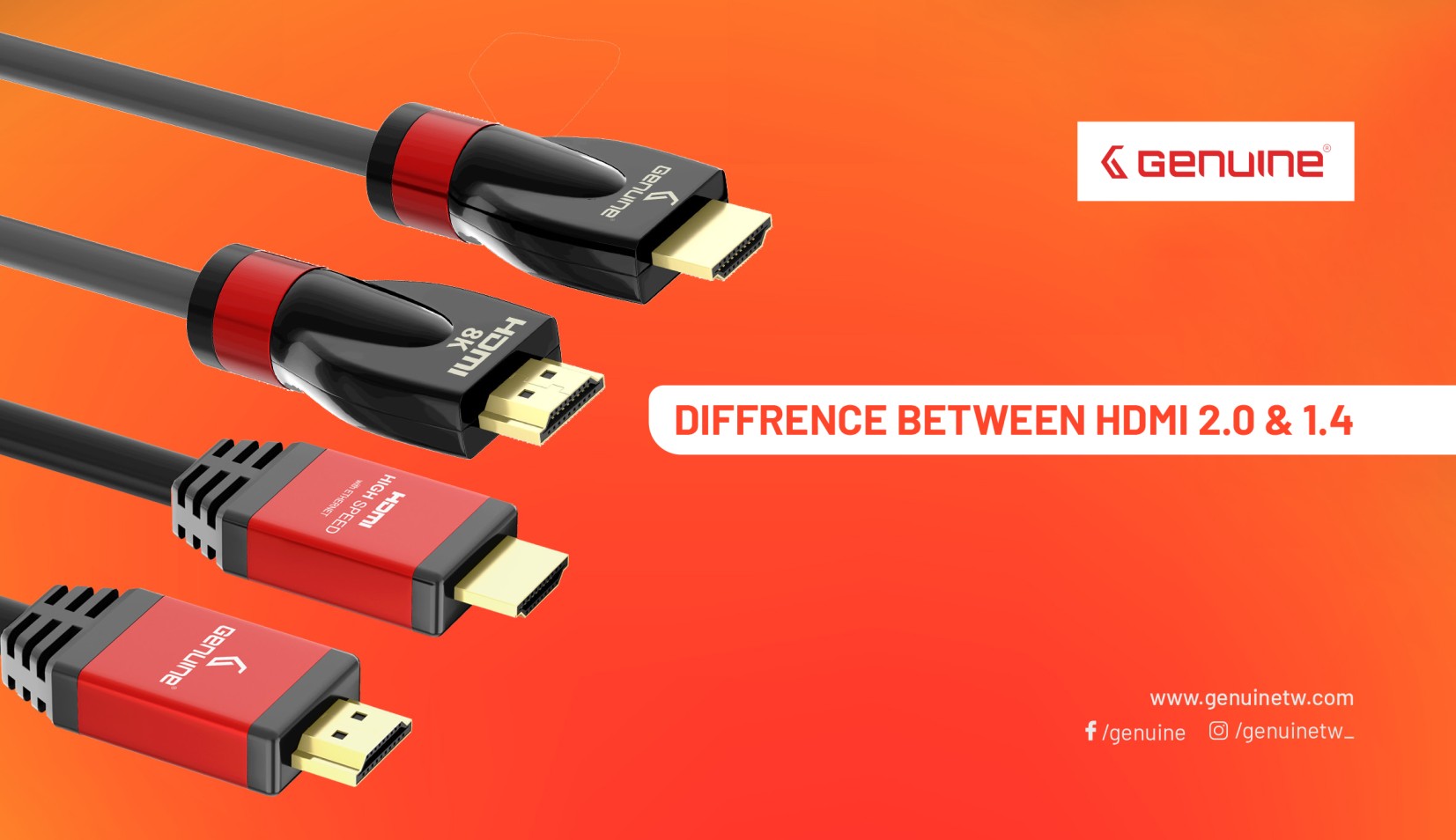
Differences between HDMI 2.0 and 1.4
High-Definition Multimedia Interface (HDMI) is an audio/video interface for transmitting uncompressed video data and audio data that is either compressed or uncompressed. The digital data is usually transferred from an HDMI-compliant source device to a compatible computer monitor, or video projector or digital television or digital audio device.
Several versions of HDMI have been developed and used widely since the technology was first released. However almost all versions use the same cable and connector. Other than improved audio and video capacity, performance, resolution and colour spaces, newer versions have very advanced features such as 3D, ethernet data connection, and CEC extensions.
Production of consumer HDMI products started way back in 2003. The HDMI devices are manufactured to adhere to certain specifications and each version is given a number or letter. HDMI 1.4 was released on June 5, 2009. It added an HDMI ethernet channel (HEC) to the existing version that accommodates an ethernet connection between the two HDMI connected devices so that they could share an internet connection.
HDMI 2.0, often referred to as HDMI UHD was released much later in 2013. It increased the bandwidth to 18.0Gbit/s and supports 4K Ultra HD displays at 60 Hz. It uses TMDS encoding for video transmission, giving it a maximum video bandwidth. Because 4K displays have much higher resolution than previous technology, they require more audio and video data to be transmitted through the HDMI cable. It offers additional features as well, such as enhanced audio capabilities and dual video streams to multiple users. HDMI 2.0 is fully backward compatible with all previous versions, and HDMI 2.0 cable uses the same connectors as the previous cabling.
The differences that viewers will notice while watching programming on compatible televisions and other devices will be most noticeable in the picture quality and color definition. All of these enhancements can be found on HDMI 2.0 compatible devices. HDMI 2.0 has a faster transfer of frames per second which creates a visual clarity that is well beyond what was achievable with HDMI 1.4. This clarity is especially apparent in gaming and in programming where Ultra HD 4K is implemented. As more television programming is shot in this manner, the visual enhancements of HDMI 2.0 will become more impactful. Viewers who enjoy the crisp look of Ultra HD will likely also appreciate the wide angle 21:9 video aspect.
HIGHER AND LOWER RESOLUTIONS
With the higher production values that are being used in producing today’s television program, new equipment needed to be utilized to transfer the higher bandwidth for this enhanced visual quality. This technology also allows for lower resolution levels which will let you watch two full programs side by side. This technology has been embraced by both Samsung and LG and it will be interesting to watch this technology take hold.
BLU-RAY
Blu-ray players have chips that create a full HDMI 2.0 experience with their ability to handle the transfers from the receiver to your television. If you are a Blu-ray user make sure that you have all of the necessary gear needed to experience a full HDMI 2.0 viewing experience. Blu-ray continues to be an early adopter in this space. HDMI 2.0 offers high picture resolution, side-by-side viewing and a 21:9 theatre-style visual aspect ratio. All of these features will take your viewing to the next level.
Check these out at Genuine.
